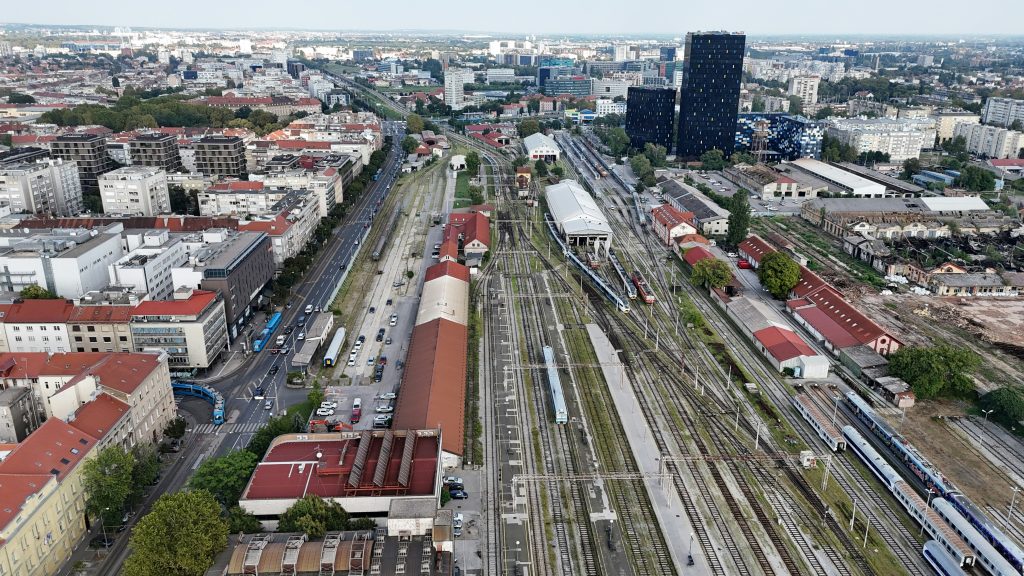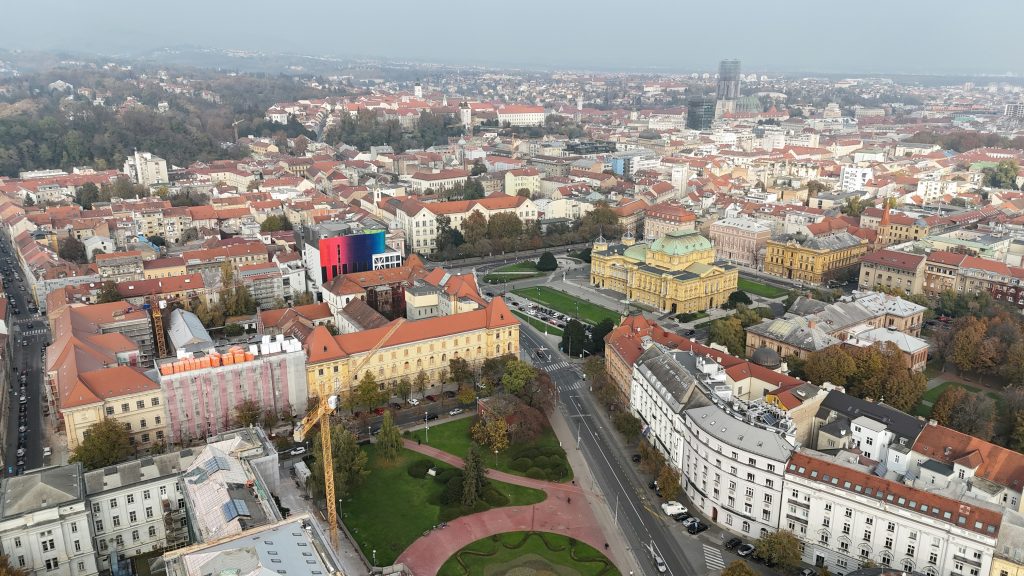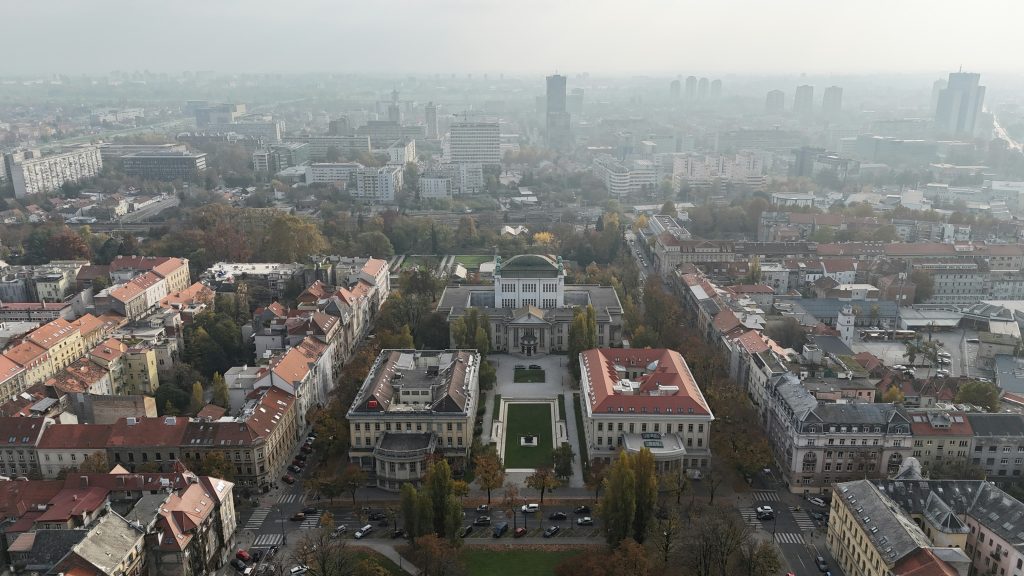January the 6th, 2025 – 2024 was a year marked by many economic factors, but what are the predictions going forward for the Croatian economy and GDP in 2025?
As Ana Blaskovic/Poslovni Dnevnik writes, 2024 saw plenty of Croatian politicians regularly bragging about how much the Croatian economy was growing. By a certain stage, it was the fastest in the entire EU.
Along with the country’s impressive credit rating jump, these were all clear signs and indicators that the country was on the right track for HDZ. However, ordinary people were concerned about increasingly high prices, a declining standard of living, the total and utter unaffordability of housing, and a widespread sense of dissatisfaction with the prospects of life in Croatia. Where does this gap between macroeconomic indicators and the general public’s perceptions actually come from?
the croatian economy stands out in the eurozone, and will likely continue to in 2025

Let’s give credit where credit is due, the Croatian economy has absolutely performed well recently. It has recorded solid high growth rates of gross domestic product, significantly higher than those recorded in all other Eurozone countries. Croatia has only been a Eurozone member for two years, and it’s worth praising. The main question now is whether and to what extent this GDP growth is spilling over into the benefits of the rest of society? For most, there’s not much, if anything, to say here.
“A kind of growth anomaly is occurring in Croatia due to the exceptional inflow of EU funds. The problem is that none of this is actually permanent and as such doesn’t flow into processes that will bring more added value to the Croatian economy, or into technological progress. In Croatia, employment increased by 5.5 percent on average in 2024, and GDP will grow between 3.6 and 3.7 percent, which means that productivity fell by 1.6 to 1.7 percent,” explained economist Željko Lovrinčević.
He adds that EU funds and demand are creating a large number of low-productivity jobs that generate little added value, while industrial production is falling, agriculture is behind another dry year, and growth has been absent in tourism, a sector that traditionally provides a strong tailwind to the economy, due to high prices. At the same time, the number of real estate transactions is falling, and the value of real lending is not recording great results either.
“What’s growing are the construction sector and activities related to earthquake reconstruction, services and consulting related to EU funds. This doesn’t really create new products and doesn’t result in a technological shift that would bring an increase in the use of robots in industry or the implementation of AI,” he added.
To illustrate that point, Lovrinčević drew some parallels with Russia’s economy, which, even in war mode, is recording around 4 percent growth with minimal unemployment. “You’ve got macroeconomic indicators that look good on paper, but when you delve deeper into the story, it remains to be seen whether and to what extent growth has affected the lives of the public,” he said.
People should be able to feel this reported progress due to the strong dynamics of the Croatian economy, and that should continue in 2025. These won’t necessarily be in the direct economic sense, but in terms of education and healthcare. There should be better results from students taking exams, better rates of cure from cancer, and a better quality of produced food.
Is that actually happening, however?
eu funds and the croatian economy

“The problem with the growth of the Croatian economy is that it is not, for now, spilling over in that direction. Looking at the Croatian economy in 2025, people should be able to really see that something is fundamentally changing in society and the economy for the better. Otherwise, we’ll only have the superficial dynamics that only benefit capital owners and rentiers while this “anomaly” created by EU money lasts, and that will be for the next two to three years,” stated Lovrinčević.
Once the pool of EU funds dries up, the Croatian economy could once again find itself faced with old, well-known and never-actually-resolved structural problems. These were attempted to be addressed through the National Recovery and Resilience Plan, or at least that was the initial intention. How deeply or cosmetically they actually worked is yet to be seen. If ever.
Croatia isn’t the be first, nor will it be the last to miss the opportunity to use EU money to jump on the convergence train towards the European average. The now somewhat infamous examples of Spain and Portugal are well known, as is that of nearby Greece, which was highlighted as a golden example before it became the enfant terrible of the entire Eurozone.
“The problem is that the EU fund honeymoon period has a limited duration of several years. In Croatia’s case, the inflow of EU money reaches about 3.5 percent of GDP, which corresponds to almost complete annual growth. It all depends on what you do with that time and money, in other words, what’s left when it dries up. But then it’s too late because others get the opportunity and swoop in,” concluded Lovrinčević.
A similar logic of excellent macroeconomic news that has relatively limited meaning for ordinary people can be seen in the increase in the country’s investment rating. As evidenced by the fact that the increase in the credit rating was chosen as the economic event of 2024.
Credit ratings don’t determine interest rates

“The public often attaches too much importance to credit ratings,” the CNB noted, adding that “sometimes the public mistakenly assumes that they predominantly determine the interest rates.”
An increase in interest rating is directly related to a decrease in the perception of a country’s riskiness. Because the higher the rating, the lower the risk of lending to that country is considered, and with lower risk, the greater the motivation of creditors to lend money more cheaply. The Croatian National Bank (CNB) explained that in theory, a decrease in the risk premium could first affect a decrease in interest rates on loans to the state, and consequently in lower rates that banks charge to companies and individuals. However, this is in most cases – a theory. In practice, a number of factors are at play that dictate how much a company will pay for an investment loan or a person for a housing loan.
Although news about a better rating is certainly better than news that the state looks unreliable in the eyes of creditors and therefore has a lower rating, the agency’s announcements represent an additional independent assessment of the country’s riskiness. The public often “gives too much importance to them”, noted the central bank, and “sometimes it’s mistakenly assumed that they dominantly determine the interest rates”.
“In practice, an increase in rating usually doesn’t cause a significant drop in the cost of borrowing, except in certain exceptional cases – for example, when the investment ‘ranking’ is lost. The reason is that quite often market participants and investors process information about the economic situation in the country very efficiently and without the mediation of agencies. The change in credit rating therefore doesn’t come as a surprise for them and consequently has only a limited effect on interest rates”, the CNB noted.
In particular, when the agencies assign a country a rating, they only confirm what the market participants already knew to a large extent and factored into the cost of borrowing by the state, companies and individuals. In that case, the improvement of Croatia’s credit rating alone will not affect the reduction of the state’s cost of borrowing, and thus neither companies nor people at the time of the announcement of the new rating.
a gap between theory and reality for croatia

In short, raising the credit rating is a kind of sublimation, first of all, of the fiscal capacity that Croatia has been “ironing out” for the past decade. The exit from the excessive deficit procedure, which the country entered almost simultaneously with the entry into the EU, a series of reforms that were carried out far from the public eye in the process of introducing the euro. There are hundreds of steps that sent the message to creditors that the country is a less risky client for borrowing money than it was before.
Entry into the Eurozone, the so-called euro-premium, removed currency risk, reduced regulatory costs and introduced a liquidity safety net guaranteed by the European Central Bank in the event of a disruption in the banking system.
Did the rating itself result in the arrival of a new investor in Croatia or did it enable a cheaper housing loan for someone? No, but everything that has been done before and rewarded with that rating opens the door for it. Of course, whether a loan for a person will actually be more favourable or whether a foreign investor will actually bury their shovel in the ground of a Croatian construction site will ultimately depend on the overall climate in the country. It will lean on legal (in)security, the quality of the education system that will produce educated and skilled personnel, the weight of the burden of administration, bureaucracy, housing availability, competition, etc.
When looking at the Croatian economy in 2025, the prospects of life and work in Croatia continue to be much less fabulous to many than the good growth figures are to those in power.








